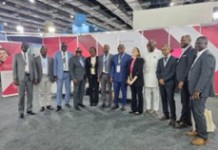By Foday Moriba Conteh
Peace building is an activity that aims to resolve injustice in nonviolent ways and to transform the cultural and structural conditions that generate deadly or destructive conflict. In his message for the World Day of Peace in 2012 Pope Benedict stressed the importance of ‘Educating Young People in Justice and Peace’, encouraging their zeal for the building of a more just and peaceful society.
Peace in a fragile society like ours must be based on a balance of powers and involves a corresponding structure of expectations and patterns of cooperation.
Peace may become unstable when an increasing gap develops between expectations and power, as here defined, and may collapse into conflict, violence, or war. It revolves around developing constructive personal, group, and political relationships across ethnic, religious, class, national, and racial boundaries.
Strategic peace building activities address the root causes or potential causes of violence, create a societal expectation for peaceful conflict resolution, and stabilize society politically and socioeconomically.
The peace building process includes violence prevention; conflict management, resolution, or transformation; and post-conflict reconciliation or trauma healing, i.e., before, during, and after any given case of violence.
Peace-building vary depending on the situation and the agent of peace-building. Successful peace-building activities create an environment supportive of self-sustaining, durable peace; reconcile opponents; prevent conflict from restarting; integrate civil society; create rule of law mechanisms; and address underlying structural and societal issues.
Researchers and practitioners also increasingly find that peace-building is most effective and durable when it relies upon local conceptions of peace and the underlying dynamics which foster or enable conflict.
Countries that are emerging from conflict need peace-building, argues Michael von der Schulenburg, the erstwhile Executive Representative of the UN Secretary-General in Sierra Leone and head of the country’s post-war peace-building program. “Peace-building is access to water, to education, to basic health care — access to opportunities,” Mr. von der Schulenburg explained in an interview with Africa Renewal.
Thus, components of peace building include:
Rebuilding basic facilities, transportation and communication networks, utilities, developing rule of law systems and public administration, building educational and health infrastructure, providing technical and capacity-building assistance for institutions, Governance, social development, conflict and humanitarian knowledge services.




